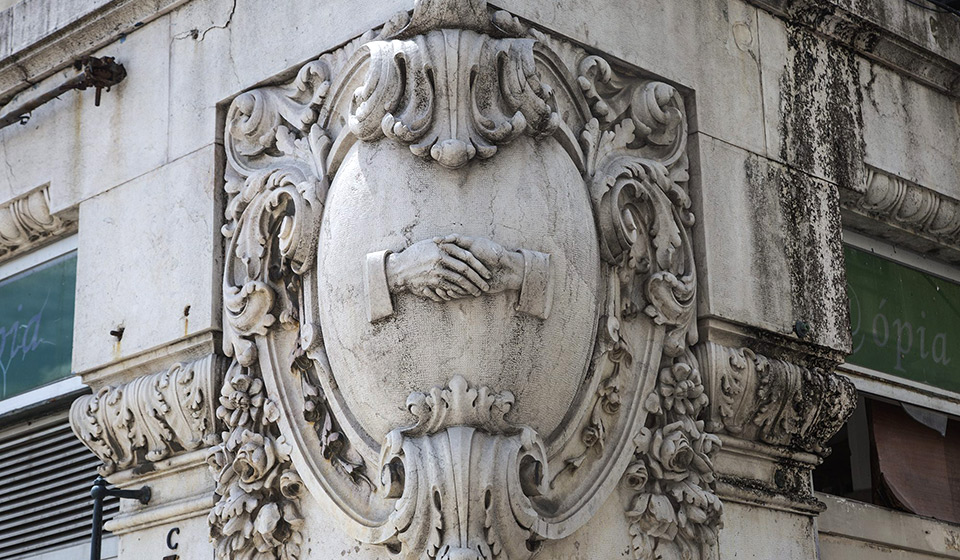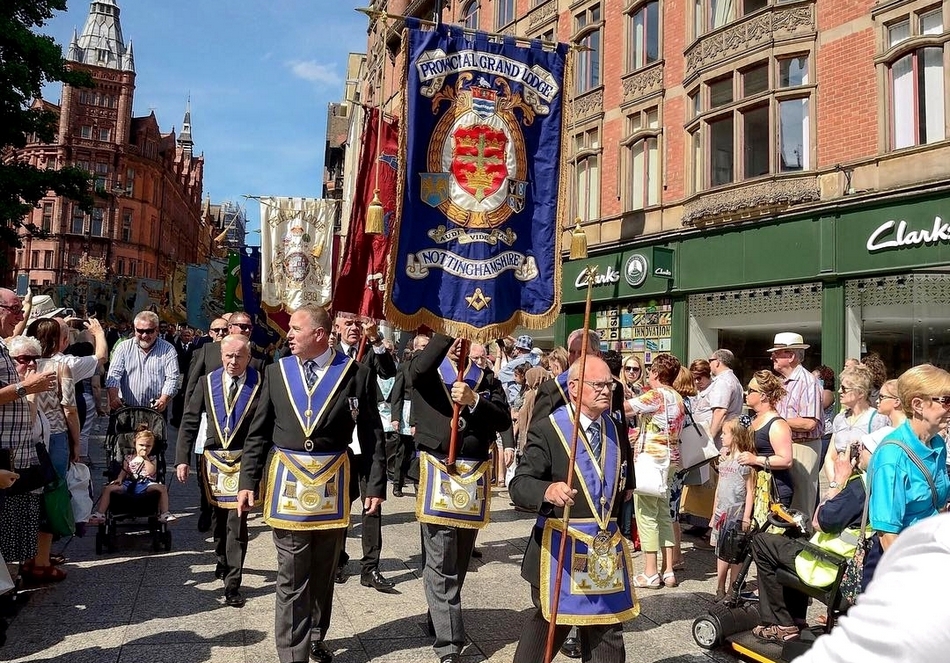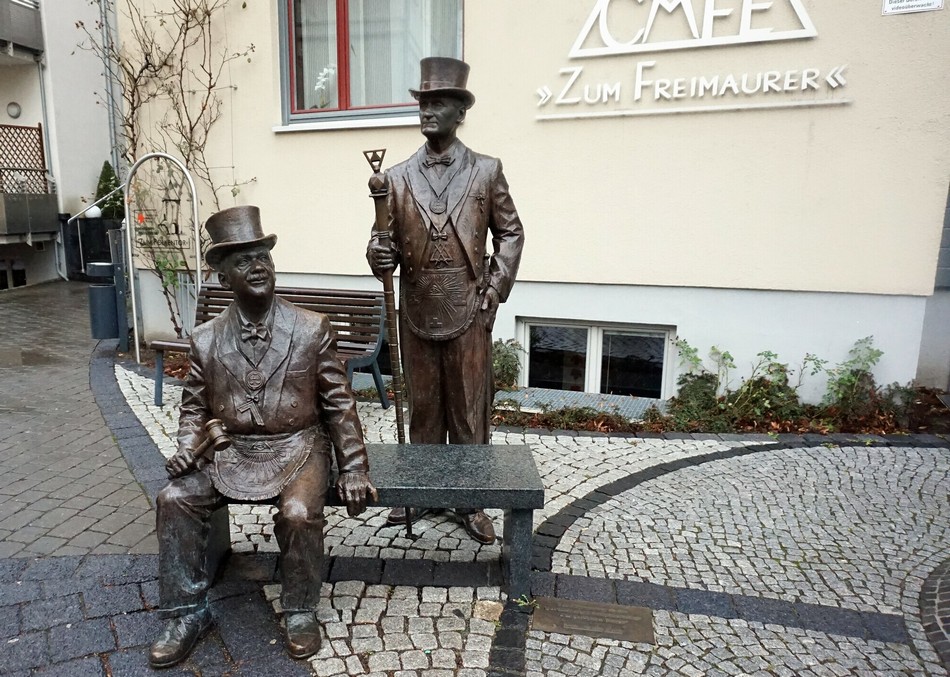On popular “Ask a question – get an answer from a specialist” websites you could ofter come across questions like: “Do the Freemasons still exist?”, “Didn’t the Masonic movement end in the XIX century? “How many Masons are there in the world now?” And the most popular question is, “Do Masons rule the world?”
“Specialists”, as a rule, answer those questions something like: “The Golden Age of Freemasonry remained in the 18th century. Now Freemasons are a handful of history lovers who like to participate in ancient knightly rituals – something like a club of historical reconstructions”.
In the “golden” for freemasons XVIII century Freemasonry was a more like fashion but remained the prerogative of the aristocrats and the most enlightened intellectuals – scientists and artists. It was an influential but tiny social group. So what is Freemasonry in the early XXI century? Is it a “club of history lovers”, a charity organisation or “the secret world government”, as usually represented by TV channels specialising in “mysteries, scandals and investigations”?
The influence of any organisation can be assessed primarily by its size. And here is where the problem immediately arises. As Masons initially do not publicize their names, “population census” or any sociological survey among them is impossible. Freemasons usually inform journalists and sociologists about the average estimated figures, often overestimated. However, sometimes it is possible to get quite reliable information – when the leadership of the Great Lodge decides to make figures of this kind public.
After 2017, Grand Officers of the National Grand Lodges, and, above all, the leaders of the oldest in the world the United Grand Lodge of England have begun to change. High positions were taken by the younger generations: businessmen, advertising, PR and IT specialists. Policies concerning the wider society have started to change dramatically. Detailed reports on the Order’s activities began to be published on the Internet, including quite reliable information on the number of members of lodges.
At the 48th Assembly of the Brazilian Symbolic Confederation of Freemasonry (one of the largest Masonic organisations in the world), took place in July 2019. The Grand Master of the Grand Regular Lodge of Portugal Armindo Azevedo made a report on the state of Freemasonry in Europe at the beginning of the second decade of the XXI century. He stressed that it was difficult to make reasonable assumptions on the state of freemasonry. Today Freemasonry is represented by different doctrines, ritual practices and institutional structures of various charters, that are often unrelated and not recognising each other. Nevertheless, Armindo Azevedo was able to draw up some statistics based on the figures available to him, which formed the basis for this publication.
Among a great many different masonic organisations, which are mutually recognised by European, and world Freemasons, there are two powerful branches, which have been competing with each other for the last 250 years, despite the fully alignment on most ideological points: the Anglo-Saxon branch and the French Branch. As the oldest, a small advantage in membership numbers has the Anglo-Saxon Branch with its spiritual centre in London. The French branch is in opposition to it and very slightly inferior to it in numbers. The disagreement between them arose after the French Revolution, when the anticlerical French Freemasons amended their statute, allowing atheists to be initiated into the Craft. For the British and American masons, both then and now, faith in God is a prerequisite for admission to a lodge.
Other European Great Lodges are always on the move, changing and reconfiguring. They experiment with rites, discovering liberal, exploratory, mixed, female and other charters. At the same time, despite inevitable disagreements, for all of them, the United Grand Lodge of England and The Great Orient of France remain the basis for the definition of their Masonic identity.
According to Armindo Azevedo, on the Masonic map of Europe, today can be distinguished four regions, between which there are significant differences: South, North, East and the Islands (The United Kingdom).
Southern Europe
The absolute majority of the population in Southern Europe are Catholics, who for centuries have had the most substantial ideological influence of the Roman Catholic Church over them. At all times, the Vatican has treated Freemasonry as a dangerous ideological rival, which must be actively fought. For three hundred years, different popes issued 13 bulls against Freemasonry, in which Catholics were categorically forbidden to join the ranks of freemasons. This fight does not stop for a minute, even today. Campaigns to defame Freemasonry in the media and social networks with the support of the Church are regular and ongoing.
If some Freemasons violate the law, as in the case of the Italian mafioso Licio Gelli and his so-called Lodge “Propaganda 2”, it may serve as a reason to persecute Masons throughout the country. At the same time, under pressure from the church, the government did not pay any attention to the fact that by the time of his arrest, Licio Gelli had been expelled from Freemasons for many years for his illegal and political activities.
Such antimasonic campaigns were carried out regularly in Southern Europe. In Portugal in 1834, the head of the government during the Regency of Pedro IV, Prime Minister Joaquim Antonio de Aguiar was able to pass a law under which all religious orders were closed and destroyed. All buildings belonging to temples, monasteries, colleges, shelters and hospices were nationalized and transferred to the National Treasury. Ritual objects and documents were destroyed. In national history, Haguar remained under the nickname “Mata-Frades” (“Monk Killer”).

During the period of strict prohibitions on Freemasonry, masonic signs and symbols continued to adorn historic buildings in central Lisbon.
In the twentieth century, anti-Masonic policy in Portugal was continued by the authoritarian regimes of Antonio Salazar and Marcelo Caetano. The revival began only after the Carnation Revolution in 1974, and it became mostly typical of the countries where Freemasonry was disbanded. It started with the fact that the state returned confiscated buildings to Freemasons by a specially written law. Then there was an official appeal of the Grand Master to the nation. In 2003, the President of the country paid a visit to the Grand Lodge – it was a necessary impetus for the development of the national movement. After that, in a short period, about three thousand people joined the ranks of Masons, who today are united in 150 lodges on the mainland. Als lodges have appeared in the island estates and former colonies that speak Portuguese: Madeira, Sao Tome, Principe, Cape Verde, Guinea-Bissau, Azores, Angola. A Portuguese lodge has been opened on the island of Macao, China. Portugal’s Grand Lodge was also the mother of the Grand Lodge of Mozambique, which was consecrated in 2009.
In the 20th century, Mussolini in Italy and Franco in Spain purposefully physically destroyed Masons. In France, the confrontation between Freemasons and the church was particularly acute, as there Freemasons were often atheists. The majority of French freemasons, however, are people of faith but advocate the separation of church and school. Through the efforts of Masons – members of the government – the study of “the law of God” was removed from the schools’ curriculum. In response, an unprecedented anti-Mason campaign unfolded in the press to misinform the public and discredit the Order. It received such a resonance that to this day, many sincerely believe that Masons worship the devil and drink the blood of babies. And this happened despite the fact that the author of the scandalous “revelations”, journalist Leo Taksil, more than a hundred years ago frankly admitted that the series of his “reports” was pure fiction from the first to the last word.

The Masons elegantly avenged the Vatican in response to constant harassment. They financed the creation of a monument to Giordano Bruno. It was erected on the very spot where in 1600 the Inquisition built a fire, on which the great scientist was burned. His reproachful gaze is fixed precisely on the papal throne.
At the same time, many significant personalities-masons, as, for example, the founder of the Italian Republic Giuseppe Garibaldi, are role models for the youth of the Southern European states. The number of Masons in these countries is quite numerous. Still, so far, they are only talking about the restoration of the Masonic movement after the disasters of the twentieth century.
Northern Europe
The governments of the Northern European countries, where the Protestant population, treated Freemasonry much more kindly, respecting their principles and goals. Persecution by the Catholic Church led to a certain rapprochement between freemasons, secular societies and monarchies of these countries.
During the Second World War German occupation, freemasons in Northern Europe were severely repressed, along with Jews and Communists. But the freemasons of Germany suffered the most from the Nazis, who were physically destroyed by almost 90% (no exact figures are available, but according to some estimates about two hundred thousand people died).
In the post-war years, Freemasonry in Northern Europe has recovered relatively quickly, and by the XXI century, it exceeded its pre-war numbers. To be a freemason in Scandinavia and the Benelux countries is honourable and prestigious. Freemasons have the support of the government, and where the monarchy still exists, representatives of royal families are traditionally leading the Order. These countries are prevented from playing a more prominent role in the international movement by their small total population. But it is in these countries that the world centres of alternative Masonic charters are located: mixed male-female charters and a dominant Paramaskan international order “Human Rights”.
The Islands
In England, Ireland, Scotland and Wales, as well as in the 23 other British Commonwealth territories, regular Freemasonry exists naturally. The Church of England, created by Henry the Eighth to oppose the Vatican, never conflicted with Freemasonry, but on the contrary, found support in it and continues to coexist in harmony with the Order today. It is quite reasonable for members of a British Lodge to go outside in ceremonial attire and move to the nearest church to attend the service.

The Masons of Nottingham are on their way to church after a Masonic meeting.
One of the main problems on the islands is the ageing of members of the lodges and the lack of new faces. This is due to the extremely strict criteria for the selection of candidates.
The problem of staff rejuvenation has been taken very seriously by the current leadership of UGLE. Individual projects have been created to attract youth to Freemasonry. One of such projects – the creation of a particular type of lodge for university youth – has already been successfully implemented. On March 2, 2019, more than 700 high-ranking freemasons from all over England filled the magnificent Freemasons Hall in London to witness the consecration of the first in the world lodge for young masons “Essex Cornerstone Club № 9968”.

The ceremony of the consecration of a new type of lodge for young Freemasons at the central temple of British Masons was attended by 700 honoured guests from all regions of Britain.
Eastern Europe
The countries of Eastern Europe are perceived in the Masonic world as the new European Freemasonry, even though in the XVIII century the Order of Freemasons was present everywhere. However, in 1822 and again in 1826 throughout the Russian Empire, under whose rule was most of Eastern Europe, Freemasonry was officially banned. After a short revival period from 1905 to 1920, most Freemasons were arrested or killed by the Bolsheviks. To survive, they had to either go into deep underground or emigrate.
The situation changed after the arrival of Mikhail Gorbachev, the fall of the Berlin Wall and the collapse of the USSR. A vital role in the emergence of new Grand National Lodges in Eastern Europe was played by European Grand Lodges, which are trying to provide them with all possible support.
Members of the revived Masonic Lodges in Eastern Europe have to face the inert thinking of the majority of the population, which is mostly superstition and slanderous thoughts about Freemasonry, which they have yet to overcome.
The number of European Freemasonry
The number of Freemasonry in different countries in Europe due to these circumstances varies. By the early 2010s, there were from 650 to 700 thousand masons in Europe. Almost half of them are in Great Britain (290-310 thousand). In France, there is a comparable number of freemasons: 180-190 thousand. Together England and France make up almost three-quarters of European masons. Next, come Italy (38-44 thousand) and Belgium (26-27 thousand).
Except for Turkey (17-19 thousand) and Romania (9-12 thousand) on average, there are 15-20 thousand Masons in a European country (Germany, Denmark, Norway, Sweden).
At a lower level (7-9 thousand) are Greece, Netherlands, Portugal and Finland. There are from four to six thousand masons in five countries: Austria, Bulgaria, Spain, Iceland and Switzerland. From a thousand to three thousand, there are Cyprus, Hungary, Poland, Russia and Serbia.
Most parts of Southern and Eastern Europe, as well as their periphery, are areas with a small Masonic presence. They can be conventionally divided into three levels: from 500 to 1000 (Croatia, Czech Republic, Estonia), from 200 to 450 (Bosnia, Georgia, Latvia, Lithuania, Macedonia, Moldova, Slovenia, Ukraine and Montenegro) and about one hundred masons or less (Albania, Azerbaijan, Belarus and Kosovo).
Finally, several dwarf States with low population but extremely high Masonic density should be singled out as a separate category: Andorra, Gibraltar, Luxembourg, Malta and Monaco. Here the least information is available, but it is known that Masons play critical roles in the life of these countries.
The density of European Freemasonry
There is no complete data on the participation levels of Freemasons at the local level. However, almost all empirical studies suggest that the constant active involvement in Masonic events takes from a quarter to half of the total membership of the organisation. The share of the active part of Freemasons is quite different depending on the country, the charter and the specific lodge.
Finally, the degree of influence of Freemasonry and its involvement in public life is hugely dependent on the depth of integration into various social areas – economy, politics, culture, etc. European Freemasonry is very diverse and has a very different density of integration.
The highest social density of Freemasons is found in the island countries, which are the historical cradle of Freemasonry – in England, Wales, Scotland and Ireland, as well as in several smaller countries: Andorra, Gibraltar, Monaco and on the extreme European periphery – in Iceland. This phenomenon can be explained by the desire of local elites for deeper integration with the world’s wider community. For them, Freemasonry has long been a kind of cultural club, a place of communication where a cultured and educated person must be present. In Andorra, Gibraltar, Iceland, Ireland, Monaco and Scotland, there is one Mason per 80-150 people (or 50-90 adults). In Scotland, the Masonic density is twice as high as in Ireland and three times higher than in England (there is one Mason per 250 people).
In Europe, there is also a high density of masons in the Belgian-French region (1 mason per 360-440 inhabitants) and in Scandinavia (1 mason per 330-340 inhabitants in Norway, 550-560 in Denmark, 600 in Finland and 640-650 in Sweden). One mason per 800-1000 inhabitants is found in three sparsely populated countries, with a total population of 400 to 800 thousand inhabitants. These are two former British colonies: Cyprus, Malta and Luxembourg.
A rather high density of freemasons is observed in four southern European countries (Bulgaria, Greece, Italy and Portugal), as well as in Switzerland – 1 freemason for 1300-1600 inhabitants. High average density (from 2000 to 3000) is found in the central part of the Balkans (Austria, Montenegro, Romania and Serbia) as well as in the Netherlands and Estonia.
The average Freemasonry density (from 4300 to 5100 people per Freemason) is recorded in somewhat different countries – Germany, Latvia, Slovenia and Turkey.
Freemasonry density is lower than average (1 Freemason per 9900-11800 people) unites former dictatorships, which were profoundly affected by fascism and communism: Spain, Hungary, Macedonia, Moldova and the Czech Republic.
Low density (from 18 to 38 thousand) is observed in the former communist countries with weak Masonic tradition: Albania, Armenia, Bosnia and Herzegovina, Georgia, Lithuania and Slovakia.
The lowest density of Masons (from 60 to 95 thousand) is registered in Azerbaijan and Russia, and in two countries where the revival of the national Masonic movement is at the very beginning of the way (1 Mason accounts for 220-450 thousand inhabitants) – in Belarus and Ukraine.
There is only one country in Europe, where there are no freemasons or lodges – it is, of course, the Vatican.
The described situation is the result of profound historical shifts and recent events that have significantly changed the political map of the continent. Ironically, the outline of European Masonic density is very similar to the outline of the late eighteenth century, with one notable exception – Germany, which until 1933 was the second largest Masonic power in Europe.

In the central part of the UNESCO-protected Saxon city of Fairinburg, all buildings are at least 600 years old. It was there that it was decided to erect a monument to the former representatives of the Masonic community of the city. The Warshpful Master and the Master of Ceremonies are preparing to open the Masonic meeting.
There are also specific processes going on inside the states and the Masonic density within the same country is far from uniform. In most cases, large and medium-sized cities are much more “masonized” than rural or peripheral areas. In many countries, there is real competition between the capital and the rest of the country. For example, three-quarters of all Austrian masons live in Vienna.
In France, in the so-called “Mediterranean” region, the density of Masons is six times higher than on the Atlantic coast. In Belgium, the Masonic density in Brussels and Wallonia is much higher than in Flanders. In 150 cities of Russia, with a population of over one hundred thousand people, only 15 cities have Masonic lodges.
Changes in the structure of modern European Freemasonry
In the countries with the highest Masonic activity since 1960, in quantitative terms, there has been a prolonged slow decline. It has now more or less stabilized. In any case, the number of Masons there remains higher than in the rest of the world. Although half of the world’s Masons are now in the United States, the triple cradle of so-called speculative Freemasonry, England, Ireland and Scotland, remains the main stronghold of the European Royal Art.
Scandinavian Freemasonry blended harmoniously into the society with a traditionally high level of tolerance and almost complete absence of xenophobia. Scandinavian Freemasonry tradition was able to organically combine traditional moral values of the past on the one hand and modern global values on the other. It turned out that Freemasons can coexist fruitfully both with the authorities and with other social institutions. According to sociological studies, three-quarters of Scandinavians consider themselves atheists, but they tolerate the national Lutheran Church, which continues to play a significant role.
In the French-Belgian part of Europe, Freemasonry has become an attractive place for socialization. With growing atheism and low political activity, it has acted as a substitute for religious practices and political battles. After the end of the Cold War, Freemasonry’s ideology of tolerance, plus the appeal to the ancient traditions of cathedral builders or even pyramids, as well as the pleasure of communicating with people close to their views, became a great way to meet the aspirations of intellectuals.
At present, the strong Masonic tradition of northwestern Europe has given an impetus to the Order of Freemasons, which moves from the centre to the periphery, east and south of Europe. First of all, it concerns Germany, which is experiencing a real Masonic revival.
The anti-Masonry policy of the Catholic Church has not become an absolute obstacle to the development of the Order in Italy and Spain, where the density of Freemasonry is growing significantly. And even in countries that experienced periods of power of the ultra-right or Communist governments, such as Bulgaria, Romania, Greece and Portugal, Freemasonry is actively developing.
In other areas, Freemasonry renewal is rather slow, because objectively there are no satisfactory conditions for it, but the movement is still going and even increasing in numbers.
What is characteristic, the anti-Masonry sentiment is not related to the number of active Freemasons and their social role. We can see this in France, where freemasons are numerous, well-organized and carry out colossal charity work, and where anti-Masonry pogroms regularly take place.
Despite significant differences, European Freemasonry is relatively homogeneous from a socio-cultural point of view. It consists almost exclusively of the middle class, its most affluent and educated part. Almost always they are urban residents with free time, socially active, but not willing to engage in political activities, mainly men (93-94%).
The French-speaking space in Masonic Europe is the most feminized in the world. In Belgium, there are 8 thousand sisters in Freemasonry. There are about 18 thousand brothers. In France, women make 17-18% of the total number of Freemasons. In Britain, there are 10 thousand women in Freemasonry, who are part of five mixed charters. In Italy and Iceland sisters represent 10% of Freemasons, in Germany and the Netherlands – 5%.
Nine of ten European Masons necessarily recognize the Divine beginning of the Great Architect of the Universe. Only in this concept, they often put very different meaning: God, the Supreme Being, the Principle of the Creator or merely a Symbol. At the same time, the fundamental principles adhered to by masons of various charters remain the same for all: equality, honesty, justice, tolerance, mercy.
Masonic ritual in development
In addition to the endless process of strife and quarrels (to clarify the regularity and mutual recognition), it is also necessary to note the numerous geographical and ideological hidden currents on the Masonic map of the Old Continent: German-Scandinavian, Swiss, Anglo-Saxon, traditional-continental, mystical, agnostic, esoteric, Christian – and this is by far not all of the shades of the Masonic palette.
Despite the rigidity and conservatism of regulations, constitutions, provisions and principles, we can notice many interpenetrations of social and cultural factors of various charters. This is quite a natural process: mobile Europeans visit each other, make friends, interact, conduct joint projects, learn from each other. This feature is undoubtedly one of the driving forces behind the development of Freemasonry for three centuries.
All Masonic charters, using different rituals, are based on a single biblical Judeo-Christian legend. Refusing to choose a confession or church, Freemasonry does not intend to get rid of references to religion. Presence of the Great Architect of the Universe allows Freemasons to cover all beliefs and spiritualities present in a global society. This fact generates diversity and adaptability of rituals.
Approximately half of European Freemasons adhere to the Anglo-Saxon ritual, using the charter “Emuleus” or the Ancient and Accepted Scottish Rite (Scottish Rite).
One-third of the European brothers also use the Scottish Rite. It is barely used in the north of the continent, but in central Europe, since the 2000s, most of the lodges have been working under its rules. One in ten masons chooses a more modern, so-called French rite in one of its variants, one in twenty chooses Swedish rite, and one in five chooses Improved Scottish (Switzerland) or Schröder (Germany) rite.
Conclusion
In Europe, as in the rest of the world, statutes, lodges and masons live and develop in a complex and constantly changing context. It is impossible to estimate accurately, but according to some estimates, more than a hundred different charters is now practised in Europe, there are from 15 to 20 thousand lodges, which contain from 650 to 700 thousand Masons, united by a single ideology, but with enormous national and regional differences. This simultaneously diverse and united community only emphasizes the vital role that Freemasonry plays today in Europe and the world.
The Order is in constant evolution, responsive to the changes that are taking place in the world while maintaining an essential spiritual constant, which remains the key to its long-term existence.
The psychological, social, cultural and spiritual trust that Masons feel makes them a cohesive community that is capable of fulfilling many socially important tasks. Such was Freemasonry during three centuries of its existence in Europe, so it remains so today, aspiring to the future.

Open doors day at a lodge.
Sources:
A Maçonaria na Europa – Comunicação do Grão-Mestre
Grand Temple witnesses a world first with Consecration of the first lodge for young Freemasons

